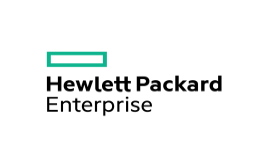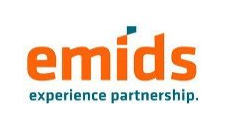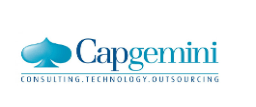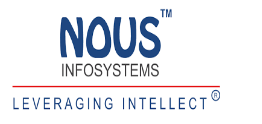For Enquiry Dial 90-350-37-886
DOT NET (C#.NET, ADO.NET, ASP.NET, MVC) Training
With Placement
- Globally Recognized Certificate
- Real Time Live Training sessions
- Corporate Trainers with 10+ Years Industry Experience
- Hands On Exposure on Real Time Projects
- Resume and Interview Preparation
- Get 100% Guaranteed Job Support
- Join for Internship Programs and get exposure to work on Industry Projects
- 3 Months Job support after completion of training
- Both Online and Offline trainings available
Why Ascent Software for DOT NET Training ?
- At Ascent we teach the latest version of DOT NET Framework
- Advance topics such as Models, Entity Framework, Web API, Security, Mobile Web Apps using MVC
- The training is more of practical than theoretical with one on one mentorship
- We keep limited batch size for full trainer attention
- Rich Study Material & handouts for reference
- Assignments are included for each topic
Who Can Do This Course ?
- Dot NET Training can be done by Freshers, Job Seekers and Working Professionals
- The course is strategically designed to suffice the requirement of current industry requirements
- Freshers will find the course easy to understand as every inch of basic knowledge is covered in it
- Experience people who are willing to learn new technologies will find the course very interesting as all topics are elaborated with live examples and real time assignments
Training Methodology

DOT NET Training - Syllabus
Best-in-industry, strategically designed Course Content, Projects, Class Sessions to
accomplish the changing requirement of market
- What is the .NET Framework?
- Architecture of .Net Framework.
- Execution model of .Net Framework.
- Common Language Runtime
- .NET Framework Class Library
- Assemblies and the Microsoft Intermediate Language (MSIL)
- Versions of the .NET Framework and Visual Studio
- Visual Studio Overview
- Choosing the Development Settings
- Resetting the Development Settings
- Creating a New Project
- Components of the IDE
- Code and Text Editor
- Code Snippets
- IntelliSense
- Refactoring Support
- Debugging
- Setting Breakpoints
- Stepping through the Code
- Watching
- Autos and Immediate Windows
- Unit Testing
- Creating the Test
- Running the Test
- Testing with Floating Point Numbers
- Basic introduction on Programming Langaauage.
- What is compiler and Interpreter?
- Using the C# Compiler (csc.exe)
- Passing Arguments to Main()
- Language Syntax
- Keywords
- Variables
- Scope of Variables
- Constants
- Comments
- Data Types
- Value Types
- Reference Types
- Enumerations
- Implicit Typing
- Type Conversion
- Operators
- Arithmetic Operators
- Logical Operators
- Relational Operators
- Increment & Decrement Operators
- Bit Shift Operators
- Assignment Operators
- The is and as Operators
- Other Operators
- Operator Precedence
- Flow Control
- If statement
- if-else Statement
- nested if statement
- switch Statement
- Break and continue statements
- Looping
- for Loop
- nested for loop
- foreach
- while and do-while Loops
- nested while and do-while Loops
- Exiting from a Loop
- Skipping an Iteration
- Structs
- What Are Structs?
- Structs Are Value Types
- Assigning to a Struct
- Constructors and Destructors
- Instance Constructors
- Static Constructors
- Summary of Constructors and Destructors
- Field Initializers Are Not Allowed
- Structs Are Sealed
- Boxing and Unboxing
- Structs as Return Values and Parameters
- Single Dimensional Arrays
- Accessing Array Elements
- Multidimensional Arrays
- Arrays of Arrays: Jagged Arrays
- Parameter Arrays
- Copying Arrays
- The System.String Class
- Escape Characters
- String Manipulations
- String Formatting
- The StringBuilder Class
- Regular Expressions
- Searching for a Match
- More Complex Pattern Matching
- Classes
- Defining a Class
- Creating an Instance of a Class (Object Instantiation)
- Class Members
- Access Modifiers
- Function Members
- Overloading Methods
- Overriding methods
- Overloading Operators
- Using Partial Classes
- Static Classes
- Object Class
- Implementing Equals
- ToString() Method
- Attributes
- Inheritance
- Understanding Inheritance
- Implementation Inheritance
- Inheritance and Constructors
- Calling Base Class Constructors
- Virtual Methods (Polymorphism)
- Sealed Classes and Methods
- Abstract Class
- Abstract Methods
- Interfaces
- Defining an Interface
- Implementing an Interface
- Implementing Multiple Interfaces
- Interface Inheritance
- Dynamic Arrays Using the ArrayList Class
- Stacks
- Queues
- Dictionary
- Indexers and Iterators
- Implementing IEnumerable and IEnumerator
- Delegates
- Creating a Delegate
- Delegates Chaining (Multicast Delegates)
- Implementing Callbacks Using Delegates
- Asynchronous Callbacks
- Events
- Handling Events
- Implementing Events
- Difference between Events and Delegates
- Passing State Information to an Event Handler
- Understanding Generics
- Generic Classes
- Using the default Keyword in Generics
- Advantages of Generics
- Using Constraints in a Generic Type
- Generic Interfaces
- Generic Methods
- Generic Operators
- Generic Delegates
- Generics and the .NET Framework Class Library
- Collections.ObjectModel
- Handling Exceptions
- Handling Exceptions Using the try-catch Statement
- Handling Multiple Exceptions
- Throwing Exceptions Using the throw Statement
- Using Exception Objects
- The finally Statement
- Creating Custom Exceptions
- Processes, AppDomains, and Object Contexts
- Reviewing Traditional Win32 Processes
- Interacting with Processes Under the .NET Platform
- Understanding .NET Application Domains
- Understanding Object Context Boundaries
- Threading
- The Need for Multithreading
- Starting a Thread
- Aborting a Thread
- Passing Parameters to Threads
- Thread Synchronization
- Using Interlocked Class
- Using C# Lock
- Monitor Class
- Using the BackgroundWorker Control
- Testing the Application
- Working with Files and Directories
- Working with Directories
- Working with Files Using the File and File Info Classes
- Creating a File Explorer
- The Stream Class
- Buffered Stream
- The File Stream Class
- Introduction to XML
- Markup
- The Document Type Declaration (DTD)
- Encoding Declaration
- Writing XML Code using Code Editor
- XML Syntax
- XML Reading & Writing
- Text Writer Fundamentals
- Text Reader Fundamentals
- XML Document
- Serialization
- Binary Serialization
- XML Serialization
- Assemblies
- Structure of an Assembly
- Examining the Content of an Assembly
- Single and Multi-File Assemblies
- Understanding Namespaces and Assemblies
- Private versus Shared Assemblies
- Creating a Shared Assembly
- The Global Assembly Cache
- Putting the Shared Assembly into GAC
- Making the Shared Assembly Visible in Visual Studio
- Using the Shared Assembly
- Programming
- The Necessity of Type Metadata
- Understanding Reflection
- Understanding Late Binding
- Building a Custom Metadata Viewer
- Dynamically Loading Assemblies
- Reflecting on Shared Assemblies
- Understanding Attributed
- Assembly-Level (and Module-Level) Attributes
- Reflecting on Attributes Using Early Binding
- Reflecting on Attributes Using Late Binding
- Putting Reflection, Late Binding, and Custom Attributes in Perspective
- ADO .NET Introduction
- ADO vs. ADO .NET
- ADO .NET Architecture
- Continuous connection architecture.
- Disconnection architecture.
- Connecting to Data Sources
- Choosing a .Net Data Provider
- Defining a Connection
- Managing a Connection
- Handling Connection Exceptions
- Connection Pooling
- Performing Connected Database Operations
- Working in a Connected Environment
- Building Command Objects
- Executing the Commands
- Data Reader Object
- Using Transactions
- Perfoming Dis-Connected Database Operations
- Configuring a DataAdapter to Retrieve Information
- Populating a DataSet Using a DataAdapter
- Modifying Data in a DataTable
- Persisting Changes to a Data Source
- Working in a Disconnected Environment
- Building Datasets and DataTables
- Binding and Saving a Dataset
- Defining Data Relationships
- Reading and Writing XML with ADO.NET
- Creating XSD Schemas
- Loading Schemas and Data into DataSets
- NET Introduction
- The Evolution of Web Development
- HTML and HTML Forms
- Server side controls
- Server-Side Programming
- Client-Side Programming
- Facts about ASP .NET
- ASP .NET different versions
- Developing ASP.NET Applications
- Creating Websites
- Creating a New Web Application
- Websites and Web Projects
- The Hidden Solution Files
- The Solution Explorer
- Adding Web Forms
- Migrating a Website from a Previous Version of Visual Studio
- Designing a Web Page
- Adding Web Controls
- The Properties Window
- The Anatomy of a Web Form
- The Web Form Markup
- The Page Directive
- The Doctype
- Writing Code
- The Code-Behind Class
- Adding Event Handlers
- IntelliSense and Outlining
- Visual Studio Debugging
- The Visual Studio Web Server
- Single-Step Debugging
- Variable Watches
- Multi-Tier Architectures
- Creating an N-Tier ASP.NET Application
- The Data Tier
- The Middle Tier
- The Presentation Tier
- Managing Concurrency
- The Anatomy of an ASP.NET Application
- NET File Types
- NET Application Directories
- Introducing Server Controls
- HTML Server Controls
- Converting an HTML Page to an ASP.NET Page
- A Deeper Look at HTML Control Classes
- HTML Control Events
- Advanced Events with the HtmlInputImage Control
- The HtmlControl Base Class
- The HtmlContainerControl Class
- The HtmlInputControl Class
- The Page Class
- Sending the User to a New Page
- HTML Encoding
- Application Events
- The Global.asax File
- Additional Application Events
- NET Configuration
- The web.config File
- Nested Configuration
- Storing Custom Settings in the web.config File
- The Website Administration Tool (WAT)
- Stepping Up Web Controls
- Basic Web Control Classes
- The Web Control Tags
- Web Control Classes
- The WebControl Base Class
- Units
- Enumerations
- Colors
- Fonts
- Focus
- The Default Button
- List Controls
- Multiple-Select List Controls
- The BulletedList Control
- Table Controls
- Web Control Events and AutoPostBack
- How Postback Events Work
- The Page Life Cycle
- A Simple Web Page
- Improving the Greeting Card Generator
- Generating the Cards Automatically
- Understanding Validation
- The Validator Controls
- Server-Side Validation
- Client-Side Validation
- The Validation Controls
- A Simple Validation Example
- Other Display Options
- Manual Validation
- Validating with Regular Expressions
- A Validated Customer Form
- Validation Groups
- The GridView
- Automatically Generating Columns
- Defining Columns
- Formatting the GridView
- Formatting Fields
- Using Styles
- Formatting-Specific Values
- Selecting a GridView Row
- Adding a Select Button
- Editing with the GridView
- Sorting and Paging the GridView
- Sorting
- Paging
- Using GridView Templates
- Using Multiple Templates
- Editing Templates in Visual Studio
- Handling Events in a Template
- Editing with a Template
- The DetailsView and FormView
- The DetailsView
- The FormView
- The Calendar
- Formatting the Calendar
- Restricting Dates
- The AdRotator
- The Advertisement File
- The AdRotator Class
- Pages with Multiple Views
- The MultiView Control
- Files and Web Applications
- File System Information
- The Path Class
- A Sample File Browser
- Reading and Writing with Streams
- Text Files
- Binary Files
- Shortcuts for Reading and Writing Files
- A Simple Guest Book
- Allowing File Uploads
- The FileUpload Control
- The Problem of State
- View State
- The ViewState Collection
- A View State Example
- Making View State Secure
- Retaining Member Variables
- Storing Custom Objects
- Transferring Information between Pages
- Cross-Page Posting
- The Query String
- Cookies
- A Cookie Example
- Session State
- Session Tracking
- Using Session State
- A Session State Example
- Session State Configuration
- Cookieless
- Timeout
- Mode
- Application State
- An Overview of State Management Choices
- Common Errors
- Exception Handling
- The Exception Class
- The Exception Chain
- Handling Exceptions
- Catching Specific Exceptions
- Nested Exception Handlers
- Exception Handling in Action
- Mastering Exceptions
- Throwing Your Own Exceptions
- Logging Exceptions
- Viewing the Windows Event Logs
- Writing to the Event Log
- Custom Logs
- A Custom Logging Class
- Retrieving Log Information
- Error Pages
- Error Modes
- Custom Error Pages
- Page Tracing
- Enabling Tracing
- Tracing Information
- Writing Trace Information
- Application-Level Tracing
- NET Applications and the Web Server
- How Web Servers Work
- The Virtual Directory
- Web Application URLs
- Web Farms
- Internet Information Services (IIS)
- The Many Faces of IIS
- Installing IIS 5 (in Windows XP)
- Installing IIS 7 (in Windows Vista)
- Registering the ASP.NET File Mappings
- Verifying That ASP.NET Is Correctly Installed
- Managing Websites with IIS Manager
- Creating a Virtual Directory
- Configuring a Virtual Directory
- Deploying a Simple Site
- Web Applications and Components
- Other Configuration Steps
- Code Compilation
- The ASP.NET Account
- Deploying with Visual Studio
- Creating a Virtual Directory for a New Project
- Copying a Website
- Publishing a Website
- User Controls
- Creating a Simple User Control
- Independent User Controls
- Integrated User Controls
- User Control Events
- Passing Information with Events
- Dynamic Graphics
- Basic Drawing
- Drawing a Custom Image
- Placing Custom Images Inside Web Pages
- Image Format and Quality
- Understanding Caching
- When to Use Caching
- Caching in ASP.NET
- Output Caching
- Caching on the C
- Introduction to MVC 6
- NET Web Forms (vs) ASP.NET MVC
- Advantages and disadvantages of each
- Determining when-to-use which one
- List of Versions of ASP.NET MVC
- Differences between versions of ASP.NET MVC
- Overview of installing ASP.NET MVC in various versions of Visual Studio
- MVC Architecture
- What is MVC?
- Architecture Explanation
- What is Controller and action method
- What is View
- What is Model
- Request Flow in ASP.NET MVC
- New Project in Visual Studio
- Overview of Folders and files of MVC project
- Introduction to Controllers
- Creating Controllers and Actions
- Calling action methods thru the browser
- Returning from action methods
- Parameters in Action methods
- ActionLink
- URL Routing
- Overview
- The need of URL Routing
- Parameters in URL
- Default Parameter Values
- Parameters with Constraints
- Literals in URL
- Introduction to Views (Razor)
- ActionResult and ViewResult
- Returning a view
- Creating a Simple Razor View
- Intermingling Code and Markup in Razor Views
- View Bag / View Data / Temp Data
- Shared Views
- ASPX View Engine (vs) Razor
- Introduction to LayoutViews
- The need of layout views
- cshtml
- Creating custom layout views
- Layout Views with Sections
- RenderSection()
- cshtml
- Overriding the _ViewStart.cshtml
Partial Views
- Partial Views
- RenderPartial()
- Introduction to Models
- Need of models
- Creating models using ‘CodeFirst approach’
- Introduction to Entity Framework
- Need of Entity Framework
- Creating DbContext and DbSet
- Configuring connection string
- Introduction to scaffold Templates in MVC
- Need of Scaffolding
- Creating controllers and views using scaffold
- Strongly typed views
- Understanding Index, Details, Create, Edit, Delete action methods and views
- Introduction to HTML helpers
- DisplayNameFor( )
- DisplayFor( )
- BeginForm( )
- LabelFor()
- EditorFor( )
- ValidationMessageFor( )
- RadioButtonFor( )
- DropDownListFor( )
- ListBoxFor( )
- CheckBoxFor( )
- AntiForgeryToken()
- Code First Migrations
- Introduction to action filters
- [HttpPost]
- [HttpGet]
- [ValidateAntiForgeryToken]
- [OutputCache]
- [HandleError]
- [NonAction]
- [ActionName]
- Introduction to Bundles and minification
- Understanding BundleConfig.cs
- ScriptBundle (vs) StyleBundle
- Importing a ScriptBundle and StyleBundle
- Creating and consuming custom bundles
- Introduction to Validations
- Model level validations (vs) View level validations
- Importing jQuery Validation Plug in
- [Required]
- [RegularExpression]
- [Range]
- [StringLength]
- [Compare]
- [Remote]
- IsValid
- [Display]
- [Datatype]
- [DisplayFormat]
- [ScaffoldColumn]
- Introduction to jQuery in MVC
- Need of jQuery in MVC
- Importing/updating jquery plug in
- Need of jQuery-AJAX in MVC
- Demos on jQuery-AJAX (with json) in MVC with database handling
- Intro to jQGrid
- Introduction to Web API
- WCF REST (vs) Web API
- Understanding HTTP methods(GET, POST, PUT, DELETE)
- Creating API controller
- API configuration
- Calling Web API from jQuery
- Demo: CRUD operations using jQuery AJAX with Web API
- Forms based security with [Authorise]
- Windows based security
- Web API 2
- Overview of Facebook Application
- OWIN Abstraction
- Inbuilt Support for Dependency Injection
- SIGNAL R 3
- Web API 3
- Introduction to Repository Layer and Service Layer
- MVC Architecture with both layers
- Demos
- Problems in accessing repository layer / service layer directly in controller
- What is Dependency Injection
- Installing ‘Unity’ plug in
- Configuring Unity
- Construction injection and property injection using interface
- Consuming WCF in MVC
- Introduction to Consuming WCF in MVC
- Demos how to consume WCF in MVC
- Introduction to Database-First approach in MVC
- Demos on ‘Database-First’ approach
- Introduction to areas in MVC
- Demos on areas
- Introduction to jQuery Mobile
- Mobile Application’ project template
- Overview of Customizing jQuery Mobile
- Deployment
- Configuring IIS
- Publishing MVC web applications to local IIS
- Project using Dot NET
- FAQs & Interview Preparation
To Enquire for Placement Related Queries
CALL 9035037886
Learn At Home With Ascent Software
We provide same level of guidance in Online training as in classroom training. You can enquire anytime to get complete details about the courses. Our career counsellors are well trained in industry required technologies and placements.
#We are rated as "Best Online-Training Provider"
Highlights of Dot NET Training
Generics, Exception Handling, Flies & Streams
Assemblies, Late Binding & Type Reflection
ADO.NET & ASP.NET, Creating
N- Tier Applications
Web Controls & State Management in MVC
MVC Forms
&
Templated Helpers
ASP.NET MVC Core & Scaffold Templates in MVC
Mobile Web Apps using MVC
Live Projects, FAQs
&
Interview Preparation
Meet Our Industry Expert Trainers
# Certified Trainers
# 10+ Years of Industry Experience
# Study Materials Designed On Real Time Problems
# Excellent Communication
# Expert Interview Panel
# Corporate Trainings
# Certified Trainers
# 10+ Years of Industry Experience
# Study Materials Designed On Real Time Problems
# Excellent Communication
# Expert Interview Panel
# Corporate Trainings

Call us: 080-4219-1321 hours: 8am-9pm
- course Duration
The focus is on In-Depth Practical Knowledge with a division of 30% Theory and 70% Practical sessions. Weekdays and weekend batches are available.
- Certified Trainers
We have best working professionals who are certified and have current industry knowledge to cater the needs of students.
- Placements
The program is focused to make a candidate get aware of industry requirement. Classes are followed with interview questions with are very important to crack an interview.
- Course Benefits
Covering up the course a person can easily crack an interview and can work on any real time projects as focus is more on practical training. An Industry Recognised Course Completion Certificate is a part of program.
- Course Highligts
Each topic is covered In-depth with Theory and Practical sessions. Training sessions are covered using Presentations followed by Assignments to enhance the knowledge of students.
- Internship programs
We have separate Internship Programs for Final Year students and Trainee Professionals which includes projects under Certified Trainer guidance . It also includes Internship Completion Certificate.

Internship Programs
- 6 Months Internship for Final - Year Students
- 3 Months Internship for First, Second and Third year students
- 6 Months Internship for BE, B.Tech, BSC and other students
- Internship for Working Professionals
- Internship Program to get hands on experience
- Internship Programe Certificate Issued
Our Hiring Partners For Placements










DOT NET Training - Batch Schedule
Mon-Fri | 8 AM to 10 AM | 12 AM to 2 PM
Sat- Sun | 8 AM to 10 AM | 12 AM to 2 PM
Mon-Fri | 6 PM to 8 PM | 7 PM to 9 PM
Need Different Timings ?
Enquire for Other Batch Timings
CALL : 080-42191321 | 9035037886
Still Hunting For Job?
Ascent Software Certification is Accredited by all companies in the world
Get Certified
And Get Job with our Placement
Assistance Support
To Enquire for Placement Related Queries
CALL 9035037886
Power BI | UI Developer | Angular | Java | Data Science | React JS | Hadoop | Selenium Testing | Security Testing | Digital Marketing | Machine Learning | Microsoft SQL Server | Python| C | C++ | HTML, CSS |…View All Courses
FAQ
Most frequent questions and answers
Ascent Software provides all necessary modes of training
- Classroom Training
- Live Instructor LED Online Training
- One to One training
- Fast Track Training
- Customized Training
- Corporate Training
No worries. We at Ascent Software assures that a student should get full advantage of every session and if a class is missed that there is always a provision of backup class. We have different batches for the same course so the student is free to attend the same topic in any other batch within the stimulated course duration. If a student is unable to undersatnd certain topic then also the same process can be done.
A student can book a slot for free demo class as per his convenient timing. We have both classroom and online demo classes.
After completion of course a student will recieve globally recognized Ascent Software Training Institute Course Completion Certificate.
We accept all kinds of payment options. Cash, Card, NetBanking, Paytm, Google Pay, PhonePe etc.
You can call on 080-42191321 or you can enquire at hr@ascentcourses.com
Working hours
Monday - Saturday : 8:00-19:30 Hrs
(Phone until 20:30 Hrs)
Sunday - 8:00 -14:00
We are here
100 FT Ring Road, BTM 1st Stage, Bangalore-29
Phone: 080-42191321
Mob : 9035037886
Email: hr@ascentcourses.com

